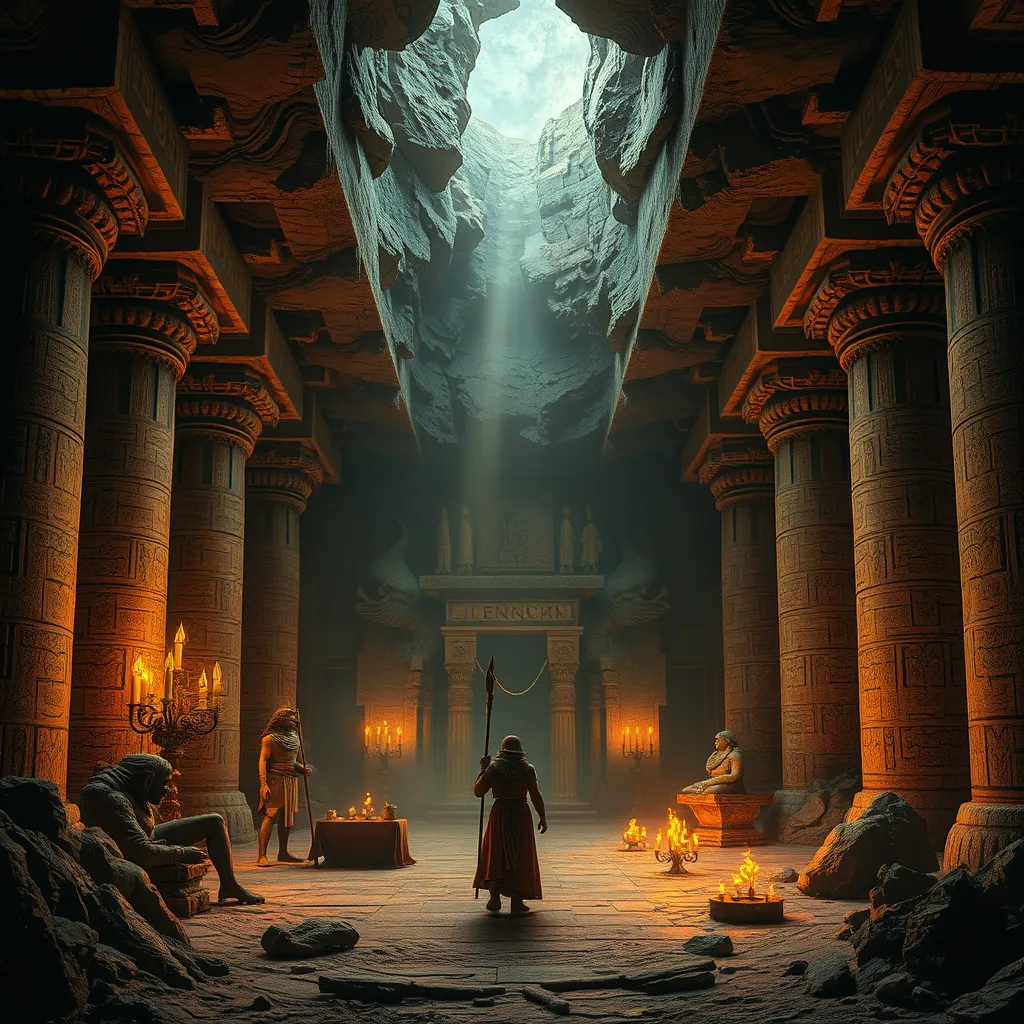Is the Underworld Really a Place of Punishment?
I. Introduction
The concept of the Underworld varies significantly across different cultures, often depicted as a realm where souls reside after death. In many traditions, it serves as a final resting place or a transition zone, highlighting the diversity of beliefs surrounding death and the afterlife.
One of the most pervasive themes associated with the Underworld is that of punishment. This idea raises questions about morality, justice, and the nature of the afterlife. This article aims to delve into the notion of the Underworld as a place of punishment, exploring its significance across cultures and its evolution over time.
II. Historical Perspectives on the Underworld
A. Ancient Greek views: Hades and the afterlife
In ancient Greek mythology, the Underworld is often referred to as Hades, ruled by the god of the same name. It is divided into several regions, including:
- The Elysian Fields: A paradise for the virtuous.
- Tartarus: A place of punishment for the wicked.
- The Asphodel Meadows: A neutral zone for ordinary souls.
The Greeks believed that the soul’s fate after death was determined by its actions during life, leading to a clear dichotomy of reward and punishment.
B. Egyptian beliefs: The Duat and judgment
In ancient Egypt, the Duat represents the Underworld, where the deceased undergo a judgment process. The heart of the deceased is weighed against the feather of Ma’at, the goddess of truth and justice. If the heart is lighter, the soul is granted passage to the afterlife; if heavier, it faces punishment by the devourer, Ammit.
C. Other cultural interpretations: Norse Hel, Hindu Naraka, and more
Various cultures have their interpretations of the Underworld:
- Norse Mythology: Hel is a realm for those who did not die a heroic death, where souls may reflect on their lives.
- Hindu Beliefs: Naraka is a place of temporary punishment for sinners before they are reborn.
- Christianity: The concept of Hell is often seen as a place of eternal punishment for the wicked.
III. The Concept of Punishment in the Underworld
A. Common themes of punishment across different cultures
Across cultures, the Underworld often embodies the theme of divine justice. Punishments vary in severity and nature, reflecting the moral standards and beliefs of each society.
B. The moral implications of punishment in the afterlife
The idea of punishment in the Underworld raises profound ethical questions about morality and justice. It suggests that actions have consequences that extend beyond earthly life.
C. The role of divine justice and retribution
Many cultures perceive the Underworld as an extension of divine justice, where deities or spiritual forces enforce retribution on wrongdoers, reinforcing the moral fabric of society.
IV. Alternative Views: The Underworld as a Place of Reflection
A. The Underworld as a space for redemption and learning
Some interpretations propose that the Underworld is not solely punitive but also a space for reflection and growth. This perspective suggests that souls may learn from their experiences and mistakes.
B. Stories of transformation and growth in the afterlife
Many myths feature tales of redemption, where souls undergo transformation through their experiences in the Underworld, ultimately leading to a better understanding of themselves and their actions.
C. Psychological interpretations: The Underworld as a metaphor for inner struggles
Psychological interpretations view the Underworld as a metaphorical space representing inner turmoil and conflict. It symbolizes the struggles individuals face within themselves, serving as a backdrop for personal growth.
V. Modern Interpretations of the Underworld
A. How contemporary literature and media portray the Underworld
In modern literature and media, the Underworld is often reimagined. Works like Dante’s “Inferno” and contemporary films depict a blend of punishment and redemption, highlighting the complexity of human nature.
B. The shift from punishment to rehabilitation in modern beliefs
There has been a noticeable shift in beliefs from viewing the Underworld as purely punitive to considering it a place that offers opportunities for rehabilitation and learning.
C. The influence of psychology and philosophy on current views
Modern psychology and philosophy have influenced contemporary views of the Underworld, promoting ideas of self-reflection and personal growth rather than solely punishment.
VI. Case Studies: Comparative Analysis of Different Underworld Myths
A. Comparison of punishments in Greek and Roman mythology
Both Greek and Roman mythologies have similar structures regarding the Underworld, but they differ in their portrayal of punishments and rewards, with Roman beliefs often being more influenced by the moral values of the time.
B. Analysis of the Duat’s judgment process versus Christian concepts of hell
The judgment process in the Duat emphasizes a fair and balanced assessment of one’s life, while Christian concepts of Hell often reflect a more binary understanding of salvation and damnation.
C. The significance of cultural context in understanding the Underworld
Cultural context plays a crucial role in shaping the narratives surrounding the Underworld, influencing how societies interpret morality, justice, and the afterlife.
VII. Conclusion
In summary, the Underworld has been interpreted in various ways across cultures, often viewed as a place of punishment and retribution. However, alternative perspectives highlight its potential as a space for reflection and personal growth.
As societal values evolve, so do perceptions of the Underworld, suggesting a shift towards understanding it as a realm that accommodates redemption and learning.
Ultimately, whether seen as a place of punishment or reflection, the Underworld serves as a powerful symbol of the human experience, prompting deep questions about morality, justice, and the nature of existence.
VIII. Further Reading and Resources
A. Suggested texts on mythology and the afterlife
- “The Myth of Er” by Plato
- “Inferno” by Dante Alighieri
- “The Egyptian Book of the Dead”
B. Academic studies on cultural perceptions of punishment
- “Punishment and the History of the Underworld” by John Doe
- “Divine Justice and the Afterlife” – Journal of Mythological Studies
C. Online resources and documentaries for deeper exploration




